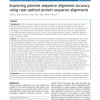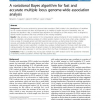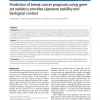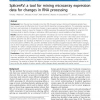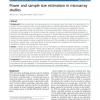BMCBI
2010
13 years 11 months ago
2010
Background: A good scoring function is essential for molecular docking computations. In conventional scoring functions, energy terms modeling pairwise interactions are cumulativel...
BMCBI
2010
13 years 11 months ago
2010
High-throughput flow cytometry experiments produce hundreds of large multivariate samples of cellular characteristics. These samples require specialized processing to obtain clini...
BMCBI
2010
13 years 11 months ago
2010
Background: While the pairwise alignments produced by sequence similarity searches are a powerful tool for identifying homologous proteins - proteins that share a common ancestor ...
BMCBI
2010
13 years 11 months ago
2010
Background: The success achieved by genome-wide association (GWA) studies in the identification of candidate loci for complex diseases has been accompanied by an inability to expl...
BMCBI
2010
13 years 11 months ago
2010
Background: Repeat-rich regions such as centromeres receive less attention than their gene-rich euchromatic counterparts because the former are difficult to assemble and analyze. ...
BMCBI
2010
13 years 11 months ago
2010
Background: Different microarray studies have compiled gene lists for predicting outcomes of a range of treatments and diseases. These have produced gene lists that have little ov...
BMCBI
2010
13 years 11 months ago
2010
Background: Recent advances in proteomics technologies such as SELDI-TOF mass spectrometry has shown promise in the detection of early stage cancers. However, dimensionality reduc...
BMCBI
2010
13 years 11 months ago
2010
Background: Alternative splicing is an important mechanism that increases protein diversity and functionality in higher eukaryotes. Affymetrix exon arrays are a commercialized pla...
BMCBI
2010
13 years 11 months ago
2010
Background: Over the past two decades more than fifty thousand unique clinical and biological samples have been assayed using the Affymetrix HG-U133 and HG-U95 GeneChip microarray...
BMCBI
2010
13 years 11 months ago
2010
Background: Before conducting a microarray experiment, one important issue that needs to be determined is the number of arrays required in order to have adequate power to identify...

